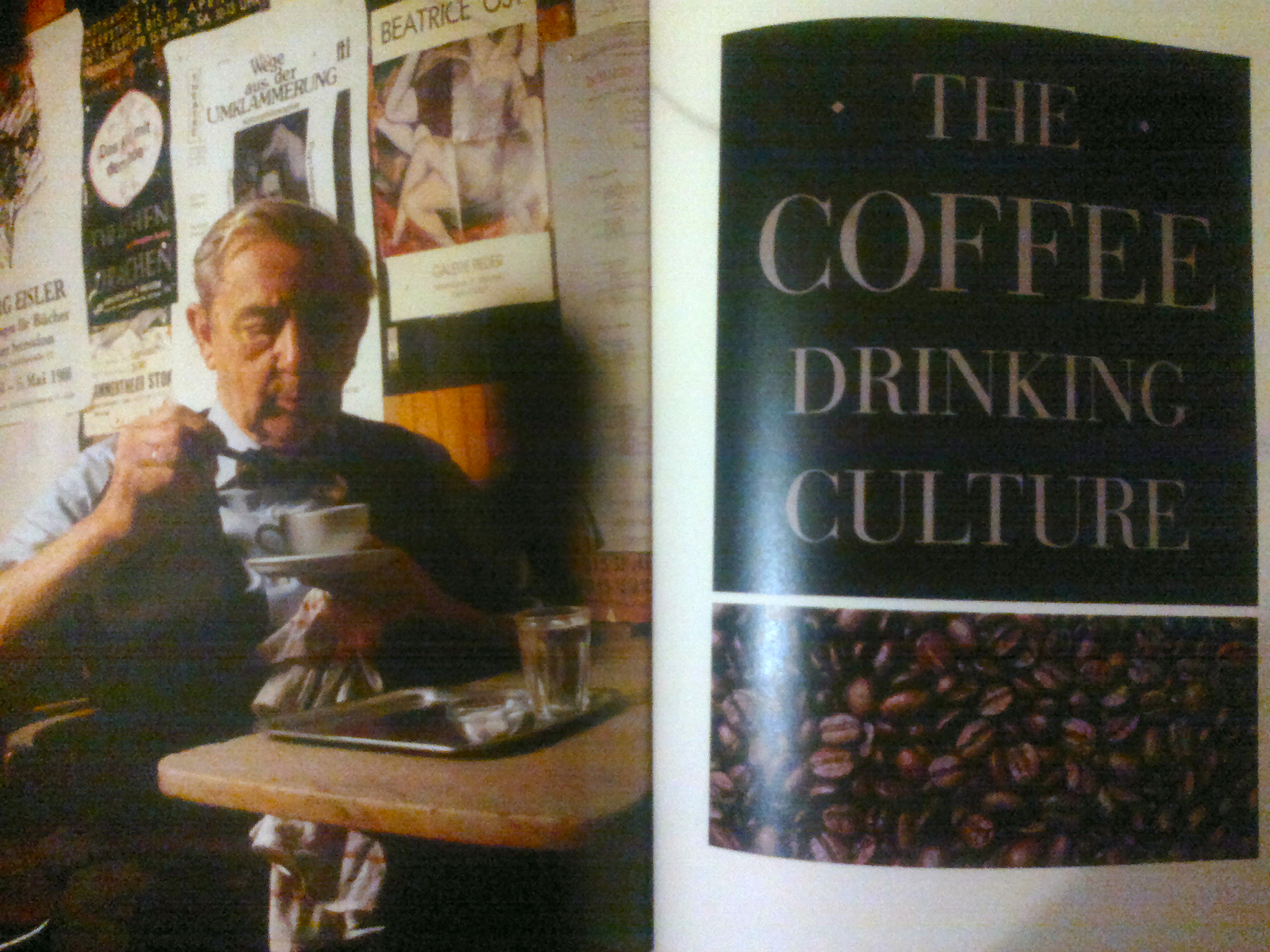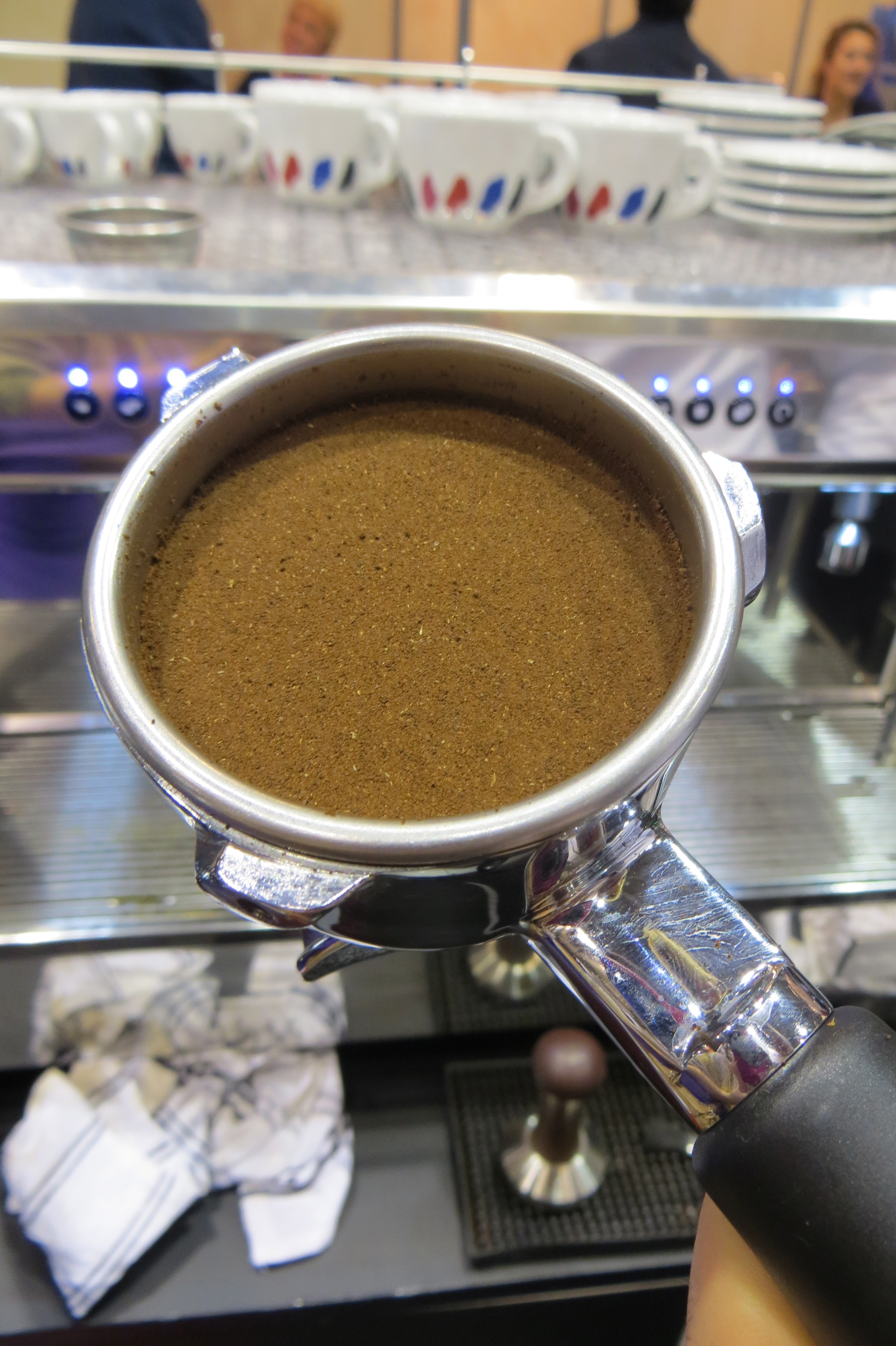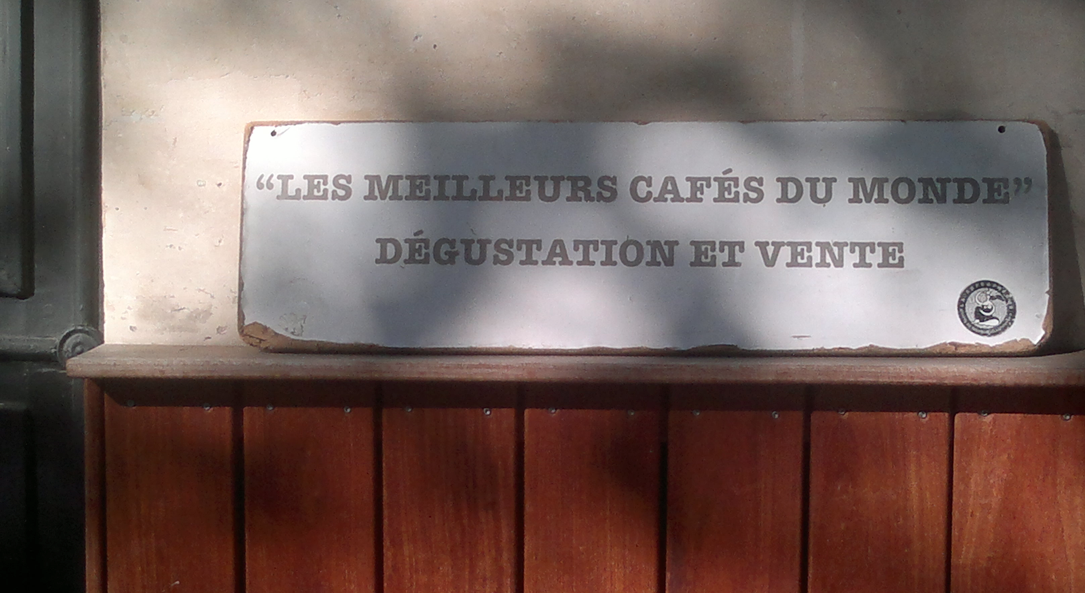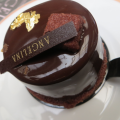Best coffee in the world, the secret behind
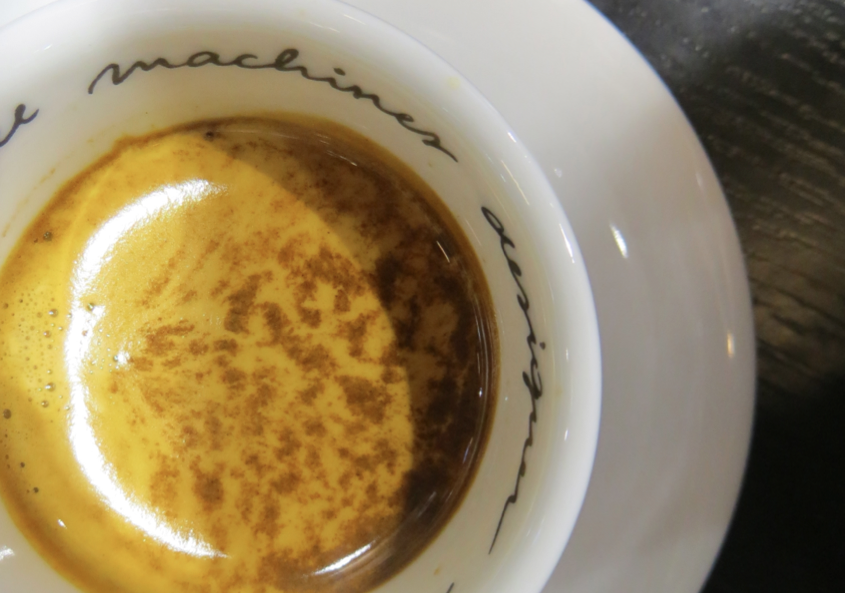
In this article you will learn about: Coffee-history, the qualities of coffee, how much coffee to drink, who consumes the most coffee in the world, why we boil coffee-water and so on… In the end you´ll find an interview with the French Victor Delpierre who was awarded 5th best in the French Barista Championship 2012: He explains the complexity of making a good coffee and gives us some good advices.
Article and Pictures by Julie Johansen
A BIT OF BASIC KNOWLEDGE ABOUT COFFEE – FROM THE COFFEE BOOK
HOW DID WE START MAKING COFFEE?
In my big coffee book it says: Coffee drinking has become very popular today, but it is almost certain that it began with the Arabs: They discovered that a tasty and aromatic beverage could be made from coffee beans and water.
To begin with the Arabs would only eat the thin layer of sweet pulp surrounding the seed, but then they discovered the “magic” stimulant properties of the beans when they were chewed.
.
Only after year 1000 the Arabs discovered how to boil water.
They found out that when you put coffee into boiling water, the substances in coffee such as: sugar, caffeine, protein, chromogenic acid etc., would be released and give the coffee its pleasant taste.
The boiled water also reduces the cellulose that gives the coffee an unpleasant taste and smell. So instead of soaking the green beans the Arabs started boiling them.
In the 14th century the Arabs discovered how to roast the beans and thereby adding a pleasing flavor to the drink, instead of just getting the stimulant properties of it.
The roasted beans were first boiled whole in water. But then came the idea of grinding: that would add more flavor and aroma to the drink.
In the 19th century people started letting the water pass through the ground coffee: In that way the water could extract the substances from the ground coffee as it was passing.
Later on the espresso-method was invented. In this method the water is put under pressure – which means that it extracts a greater quantity of the substances contained in the coffee. That is also why espresso has a stronger taste.
Since then a variety of methods of preparation have been developed, such as adding sucker, mild, cream and spirits.
THE GOOD QUALITIES IN COFFEE:
In the western world over 90 percent of the adult population drink coffee. For two reasons: The good taste and because of its effect: coffee contains over 1200 chemical components (one of them are caffeine), which has a physiological effect on our bodies: such as a positive influence on our moods, increased awareness etc. at least for a short period of time. It is also stimulant to digestion so you shouldn´t consume to big amounts.
Also: coffee should be consumed the minute it is made and not kept warm otherwise it will loose its good aromas.
HOW MUCH COFFEE TO DRINK
“To much caffeine can be dangerous at very high level of consumption, but here we are talking 10 gram = 100 cups of espresso a day.
The ideal quantity for an adult is an average of 4 small cups of espresso a day, made with coffee of the Arabica species – Because Arabica-coffee contains less caffeine: 1.1 – 1.7 percent, whereas Robusta contains 2 – 4,5 percent.
In general it is better to take small quantities of caffeine several times a day than greater quantities concentrated: which explains the success of espresso coffee: Espresso only contains 90-150 mg of caffeine per cup, whereas coffee made by other methods contains 150 – 300 mg. The reason is, that the water has more time to extract the caffeine from the coffee when it´s running through slowly.
WHO CONSUMES THE MOST COFFEE IN THE WORLD?
Who consumes the most coffee in the import-countries? (Annual consumption of Kg coffee per person)
- Northern Europe: Scandinavia (12 kg a year per head)
- Denmark (11 kg a year)
- Holland (9 kg)
- Belgium & Austria (8 kg)
- Germany (7 kg)
- France, Switzerland (6 kg)
- USA (4,6 kg)
- Italy & Canada (4,3 kg)
- Greece, Yugoslavia, Spain, Great Britain, Australia, Japan, Hungary (2 kg)
- The other Eastern European countries (1 kg)
Who consumes the most coffee in the productions-countries? (Kg a year per head)
11. Costa Rica (6 kg a year per head)
12. Colombia (4 kg)
13. Brazil (3,5 kg)
14. El Salvador, Guatemala & Ethiopia, Western Countries (nearly 3 kg)
15. Nicaragua (1,3 kg)
16. Ivory Coast (0,4 kg)
Each country has adapted coffee to its own culture and customs: so in some countries people drink a lot of coffee to quench their thirst, as well as for its stimulant properties, while in other they drink less but stronger, and see it more like an elixir.
In Northern Europe for example, the huge consumption of coffee can be due to the fact that more water is used when making coffee. So coffee serves as a thirst-quenching drink.
INTERVIEW WITH VICTOR DELPIERRE – HOW TO MAKE A GOOD ESPRESSO!
Victor Delpierre was awarded 5th best in the French Barista Championship 2012. He has worked at the Ritz Bar in Paris, and thereby developed excellent skills in good espresso making. I asked him for some general tips, and where to start when you wish to make an excellent espresso?
He says: “In order to make a good espresso it is not enough to have a good machine: There are in fact some basic elements that should be taken into consideration, such as: The blend, the measured amount of coffee, the machine and lastly the barista who has to regulate and control the machine.”
“The goal is to make an espresso with a balanced and harmonious flavor, a balance between bitter and acid, and a good aroma. The aroma should be pleasing with a broad spectrum of characteristic components to give it personality.”
“When you want to make the “perfect” espresso you should start with the result and think: “What kind of coffee do I like?”: For example sweet, not too strong and with a taste of honey.
Then you start making it.”
”But How?”
FIRST YOU CHOSE YOUR COFFEE-BLEND:
Victor explains that; “The first step in making a good coffee is: selecting the “right” type of coffee.
You can choose a coffee that contains more or less bitterness and aroma: The choice depends on that you wish to taste in your final espresso.
Each blend is different; depending on the country and religion it comes from.”
The countries that produce the most coffee are:
- Brazil
- Colombia (12 million bags a year)
- The Ivory Coast (over 4 million bags a year)
- Salvador & Guatemala (2,5 million bags)
- India & Costa Rica (over 2 million bags)
- Nicaragua (1 million bags)
Each of these coffees are different.
You can either choose to start with a pure origin alone, such as: Brazilian, Mexican etc…or you can choose to blend the coffees to create nuances in the taste: By taking a percentage of a coffee from an X geographic zone, and combine it with a coffee from a Y geographic zone.
ARABICA OR ROBUSTA?
Which coffee to choose?
Robusta has the advantage; that it gives the espresso a lot of body. However this quality doesn´t count much since the higher caffeine content gives it a bitterer flavor and a lack of aroma (often woody or earthy). These coffee beans are often stronger.
Arabica natural has a balanced flavor and medium strength and a wide range of aroma.
Arabica washed is generally sweeter and more acid. They have a very strong but relatively narrow range of aroma that may be flowery or fruity, sometimes with a pleasant scent of toast. But again, the coffee world is more complicated… generally it´s good to mix the natural and washed Arabica.
Victor explains that: “You can say to the barista that you have found a coffee from X country…say that it looks nice and ask for the flavor?. Because once you know its flavor you can decide weather you want it to be sweeter or stronger: It is all in the adjustments of the machine. You continue adjusting until you have found the perfect coffee for you.”
ADJUSTING THE MILL
Victor says: “You adjust the mill to create a more or less coarse or fine ground, which will influence on the final coffee result and taste as well. The ground can help you highlight a certain flavor in your coffee.
A coarse versus fine ground will not at all give you the same result of taste – so the ground you make depends on the taste you want to obtain.”
AMOUNT OF COFFEE:
“The amount of coffee that you put into the filter also has something to say: 15 gram versus 20 grams for example. It leaves you with two different tastes of coffee.”
“When you put the coffee in the espresso-filter: make sure that there is a regularity in the compression of the coffee all over …otherwise the water will run faster through at one place than the other.” Victor shows how to do.
THE WATER SETTINGS
“The water settings are important factors as well. If the water is too hot when it hits the coffee it will burn the surface and leave a taste of “burned coffee” which is not good.
If the water is too cold the taste of coffee will not be reflected in the best way.
And it is important to adjust the mill and water-settings often – because the weather, the humidity in the air and the temperatures are changing – and those are factors that have an impact on your coffee.”
You might have found the “right” settings one day and made an excellent coffee, whereas it doesn´t taste the same the day after, although you haven´t touched the settings..and that is why.”
START PRACTICING – MAKE YOUR OWN COFFEE
Victor says, “In general you will have to experiment in order to obtain the taste and aroma you wish for:
First step: Try to start with 15 grams of coffee…and to make a 3cl espresso.
By adjusting the water to 25 seconds (to run though) you produce 1once of coffee (3cl)
If you realize that in 25 seconds you produce 4cl off coffee – you adjust the mill to give you a finer grind.
If in 25 seconds you only produce 2cl of coffee, you adjust the mill to give you a coarser grinding: It will make the water pass faster.
Step 2: Once you have your coffee of 3cl in 25” (seconds) you can put more or less coffee in the filter and taste the aroma. That is when you start understanding your beans:
A) Is it to strong or acid with 15g?
B) Then try with 16g (but don’t forget to adjust the mill/the grinding each time to obtain the 3cl in 25 seconds)
C) now it’s better, but you prefer a coffee more fruity or more floral, try with 17g or 14g
D) (…..)
E) After many tests you can find the “perfect coffee” that corresponds to your taste.!
Compare with another espresso:
For example: 7-9 grams of coffee, with water at 90 degrees and 9-10 atmospheres, in about 20 seconds time. Taste the difference and adjust a little as well.”
“The point is” he said: “The choice of coffee – the way you grind it – the amount of coffee you put into the filter, the water temperature, quantity and time, are all factors that influence on how your coffee will taste…. So you can play with it / You will have to try your way out: Tasting the coffee and adjusting the settings until you get the result you wished for. “
–
JUDGING THE SIGHT
The coffee-book explains that: “The “cream” on the surface of the espresso gives us an indication of the blend.
A pale cream, of homogeneous color tending to whitish yellow, signifies that the coffee has been under-extracted: the temperature and pressure of the water is too low or the extraction time too short. (either because too small a measure of coffee is dispensed or because the coffee is too coarsely ground).
If the color of the cream is tinged with dark brown (almost black) on the one side and white on the other, this means that the espresso is over-extracted. (Because too large a measure of coffee is dispensed or because the coffee is finely ground).
Correct extraction produces a cream of homogeneous color, at best dappled with darker streaks. If the color is deep hazel with reddish tints, and the bubbles are tiny and compact, this signifies that the blend is composed mainly or exclusively of coffees of the Arabica species.
A dark brown with grayish streaks and the “mesh” of the cream is looser and less compact, than the blend is composed mainly with Robusta species.”
JUDGING THE SMELL
In order to “sniff” the aromas it is best to stir coffee, because the layer of cream tends to prevent them from rising.
This is the hardest and most subjective aspect of coffee-tasting.
Thus the aromas of Arabica coffees may be identified as chocolatey, flowery, fruity or “like toast”, and the Robusta may be described as woody, earthy or moldy. This is an extreme simplification, because the aromas of coffee are made up of about 700 chemical components and the possible combinations are infinite.
–
JUDGING THE TASTE
The characteristics of coffee are: sweet, acid and bitter.
Then there is the “body”, which is the sensation of density of the coffee.
A better understanding will come with the experience. You can start to note what your settings are, taste the coffees and compare them… afterwards you´ll change one single setting and compare the coffee-taste again.”
CLEAN YOUR MASCHINE OFTEN!
It is important to clean the container that holds the coffee beans, and the dispenser of the ground coffee (periodically). The filters, and the spouts should be cleaned every day.
COFFEE WITH MILK
Is yet another process and technique. You will have to learn to empty the milk for air and give it the soft creamy substance. (That´s the next step that we won´t talk about in this chapter). That is something you can learn once you´ve learned to make a good espresso.
IS EXPENSIVE COFFEE THE BEST ? I asked Victor
He said: “It is very complex to make a really good cup of coffee: choosing the most expensive coffee in the world is not enough.
You can very well choose the most expensive coffee in the world without getting the best result…it depends on the barista. If the barista (you) don´t adjust the settings right, it can destroy the good coffee, and you don´t obtain the result you wished for. It all depends on how you prepare your coffee (the slightest changes in the settings make a difference).“
He also said “It is not about making “the best coffee in the world”, it´s about making the best coffee for YOU or your client/family/friend/love etc., the one that fits you/them perfectly… that´s the real challenge and where the coffee becomes the best in the world – to YOU”.
Victor continued explaining: “Coffee is like wine: you can get many different sorts and tastes – depending on which geographic zone it comes from, how it has been treated, and where it has been stored etc. – but weather it´s a good wine or not depends on your taste. The difference between coffee and wine is that: Once the wine is done it can´t be changed whereas you can always change the settings of the coffee-machine if the taste doesn´t suit you.”
HOW DO YOU BECOME THE BEST BARISTA IN FRANCE? I asked.
“The French Barista Championship is a competition that requires a lot of precision. The participants will have to do/ present 4 espressos, 4 cappuccinos and 4 signature-beverages. All of them must be made within a timeframe of 15 minutes, and have coherence.
The participant must: Be able to explain his settings: For example say: I have chosen this particular coffee, this particular grind, this particular time of water … and all of these factors together (that I have chosen) – will create this particular coffee with an X taste, an X aroma and an X touch of apricot etc.
That exact flavor combination (that the participant has chosen as his theme) should then be the same in all 12 drinks).
–
Afterwards the judges will taste it, and should be able to find the exact taste within the coffee. If they do it is excellent, if they don´t it means that you haven´t been precise enough.
–
The jury will measure all of your parameters to make sure of the regularity: that each time the result is the same.
In that way the judges can see if the participant control the technique.
The one who wins it the one who; explains the best all of his parameters and where the jury finds the exact tastes within the coffees and where there is regularity.
The higher you get in level in the international barista competition the more the participants will be able to find amazing tastes and ideas for their shows.”
Good Luck !!!




